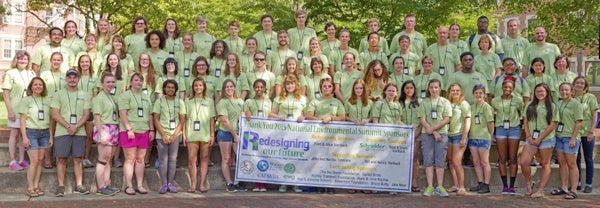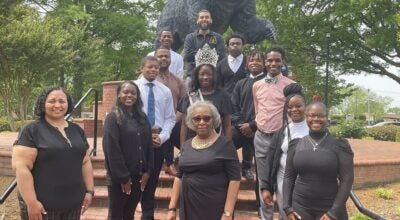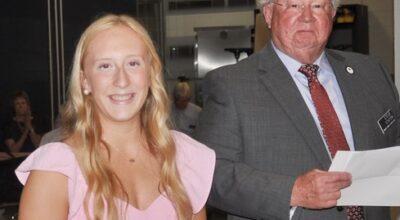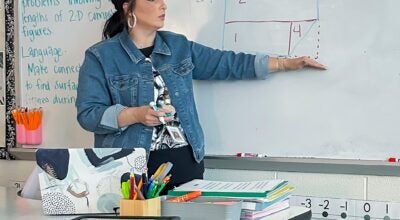National Environmental Summit receives high marks from students, instructors
Published 12:00 am Thursday, August 6, 2015

- National Environmental Summit. Seth Holtzman
By Rebecca Rider
Center for the Environment
As the National Environmental Summit for High School Students finished its fifth year in mid-July, participants and teachers alike agreed that it’s more than just a course on the environment.
The summit is the brainchild of the Center for the Environment at Catawba College and Rocky Mountain Institute (RMI) and is hosted on Catawba’s campus. The Environmental Working Group, headquartered in Washington, D.C., joined as a partner this year.
It is a chance for high school students with a passion for the environment to get a taste for field work, learn leadership and communication skills, hear nationally renowned environmental speakers and use their particular skills and interests to create positive change.
Catawba professors teach eager students everything from debate tactics and international policy to trapping techniques and the value of biodiversity.
Center Founder and Executive Director Dr. John Wear says he got the idea for the summit several years ago when he noticed a pattern among students. “I had more and more students walking into my office who were interested in environmental stewardship but didn’t necessarily want it as a career,” he says.
Wear started to think about how he could best serve these students and others like them who were still in high school. The answer he came up with was the National Environmental Summit.
He wanted to give students who have a deep interest in environmental stewardship the knowledge and skills they need to apply that interest to whatever career they choose. To help make the experience as interdisciplinary as possible, Wear reached out to Catawba faculty, inviting teachers from every department to be a part of the experience.
He looked at the skills students need to be environmental advocates – information which they wouldn’t routinely receive in a classroom. One of the main components was whole systems thinking, which is critical to addressing most environmental issues, according to Wear. For that piece of the summit, he approached Rocky Mountain Institute, an international leader on this approach to problem solving.
Rocky Mountain Institute Managing Director Martha Pickett says the organization was happy to partner with the center. The partnership is a good match, according to Pickett.
Rocky Mountain Institute is adept at whole systems thinking, Environmental Working Group is skilled in communication and the Center for the Environment and Catawba faculty are experts on other pertinent topics. And while the summit is different from Rocky Mountain Institute’s day-to-day activities, Pickett knows how important fostering a passion for environmental stewardship in young people is. They’re the ones who will carry the mantle forward, she says.
And the students rise to the occasion. “These students seem very aware of the future they’re inheriting,” Pickett says. They don’t shrink from the challenge. During the four sessions that Rocky Mountain Institute teaches during the summit, students are presented real-world problems and asked to think critically and creatively about how to solve them by taking all the variables into account and searching for the best possible answer.
“It’s important for high school students to have this kind of thinking under their belt before they go off to college,” Pickett says.
Seth Stephens, a Catawba sophomore and one of the Center’s Environmental Stewards, agrees. Sustainable thinking was the most important thing he gained from the summit when he attended it as a high school student in 2014, he says, and when he went back to work as a counselor at the 2015 summit, that’s what he noticed in this year’s participants as well.
Most of the participants, Stephens says, weren’t the outdoors type you’d expect at an environmental camp — they were normal kids who just had a passion for the environment. The summit equipped them to use their skills and talents in support of the environment, no matter their career path.
“It gives them an idea of what it really means to be an environmental steward,” he says.
The counselors aren’t the only ones to notice how motivated and diverse the students that attend the summit are. During her keynote speech, Environmental Working Group Executive Director Heather White applauded the students’ determination to fix the broken world they have inherited from previous generations and their desire for change and connection.
“We all have to connect with something bigger than ourselves,” White says. For the students who attend the summit, that thing is the environment.
High school junior Makayla Utt was particularly impressed with White’s presentation. “She’s such a powerful woman,” Utt says, “and she really showed me that there’s a lot that can be done. She was very motivational to me.”
Utt calls the summit a great learning experience. “It was seriously one of the greatest things I’ve done thus far in my life,” she says. “I’m more conscious now about the decisions my family makes, and I’m trying to get my family to start recycling and things like this. The summit just showed me that it’s important to care about the earth.”
Wear says he is continually surprised by how engaged and involved the students are, and faculty members who work with the participants consider it an honor to take a week out of their summer to teach at the summit. Dr. Jay Bolin, assistant professor of biology, has been running a focus group at the summit for the past four years and says that the students who come to the summit are passionate, intelligent and motivated. Interacting with them helps him get excited about his next semester of teaching.
“I learn from them,” Bolin says.
Participants agree that the connections they make here—with teachers, counselors and other students—are some of the real takeaways from the summit. They leave each year with better friends, better connections and a strong drive to transform their schools and communities.
Another goal of the summit, Wear says, is to help students develop effective communication and collaborative leadership skills. One of the ways the summit facilitates this is by ending the week with a festival in which the students present what they’ve learned in their focus groups. The festival is guided by Linda Kesler, assistant professor of theatre arts at Catawba. Kesler works with the students throughout the week to help them design creative ways to share their information. She encourages the students and tells them that no idea they have is too big.
“Sometimes the best gift you can give someone is to challenge the assumption that it can’t be done,” she says.
She notes that this expression and ability to communicate what they’ve learned and to listen to others is critical to pulling the week together.
“It’s not just, ‘what I learn on my own,’ ” she says. “It’s ‘What can I learn from hearing you talk about your experiences?’ ”
Participants cite the summit as good preparation for college. It’s not strange to see students from the summit show up in their classes a year or two later, Bolin and Kesler say. Many students who come to the summit express an interest in attending Catawba and enrolling in the college’s Environmental Sciences program.
Both faculty and students agree that it’s important for high school students to go through an experience like the summit – not just for fun or to learn, but to meet like-minded people and really connect with others who have similar passions.
Utt stresses that the summit had a big impact on her. “I feel like it has really changed me for the better to try and be more focused on things that matter,” she says.





